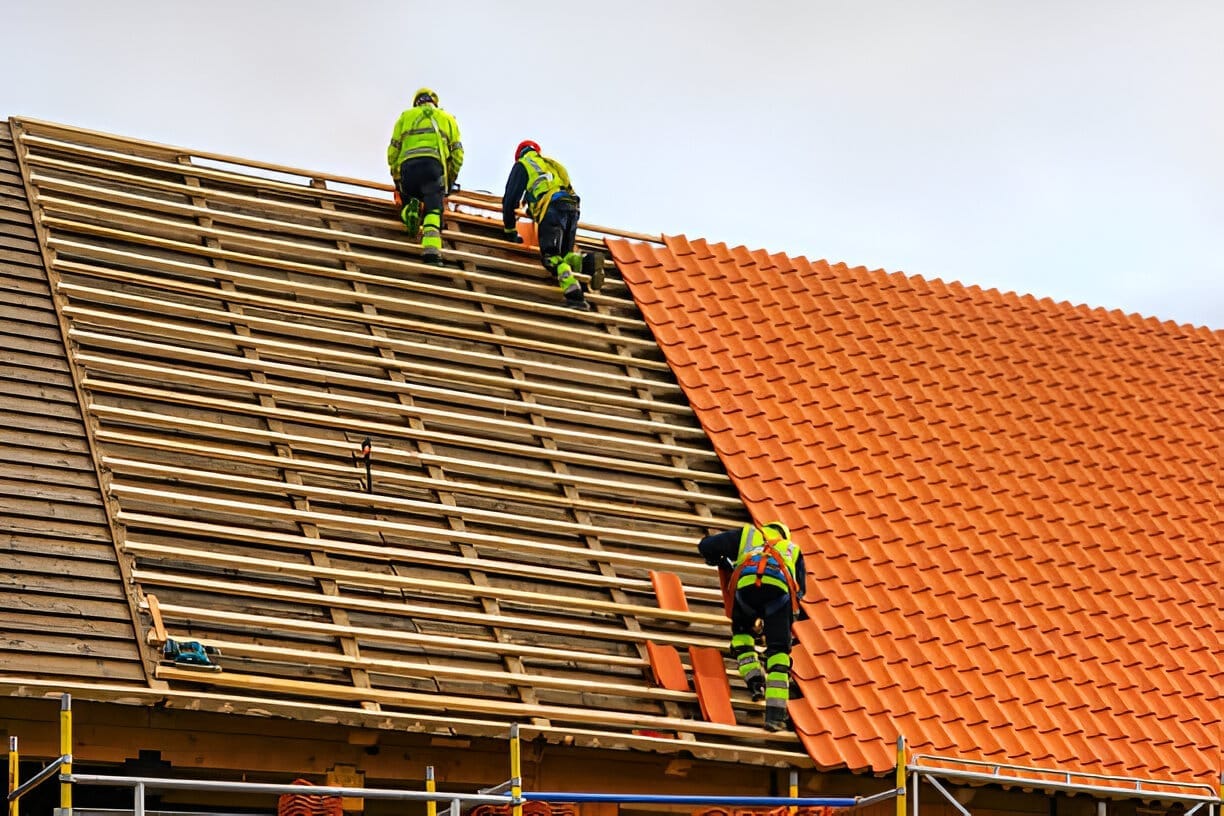Transform Your Space: Change Conservatory Roof for Improved Comfort
Last updated on July 14, 2025
Is your conservatory too hot in the summer and freezing in the winter? Replacing your old conservatory roof could be the most cost-effective way to transform that underused space into a comfortable, energy-efficient extension of your home. Whether you're looking to upgrade to a solid tiled roof, a high-performance glass roof, or a hybrid system like Livinroof or Ultraroof, there's never been a better time to reinvent your conservatory.
Introduction to Conservatory Roof Options
A replacement conservatory roof can dramatically enhance the function and aesthetics of your existing space. Homeowners typically choose between three main types of roofing materials:
Polycarbonate: A cost-effective option, but limited in insulation.
Glass: Offers natural light and modern energy efficiency.
Solid tiled roofs: Transform your conservatory into a true extension of your home.
Older conservatories often suffer from poor insulation due to outdated polycarbonate or thin glass roofing. These traditional roofs tend to make the space unusable during temperature extremes. In contrast, today's advanced roofing systems offer better thermal performance, sound insulation, and long-term durability.
A new conservatory roof not only enhances the look of your home but also increases its value. According to property experts, tiled roofs can change the classification of your conservatory from temporary to permanent, thereby boosting resale value.
Benefits of a Replacement Conservatory Roof
1. Improved Thermal Efficiency
New solid or insulated roofs significantly improve heat retention, reducing your reliance on heating systems in the winter and keeping the space cooler in the summer. Homeowners can save up to £200 per year on energy bills with a well-insulated roof.
2. Reduced Noise Pollution
Solid roofs and hybrid systems like Ultraroof and Livinroof dampen outside noise, making your conservatory a peaceful haven regardless of the weather or time of day.
3. Enhanced Aesthetic Appeal
Modern roofs come in a range of finishes and styles, including realistic synthetic or natural slate tiles, concrete tiles, and sleek glass panels. The transformation is not just structural but visual.
4. Year-Round Usability
An upgraded conservatory becomes more than a seasonal space. With better insulation and proper ventilation systems, it can be used as a lounge, office, dining room, or even a bedroom.
5. Property Value Boost
Installing a solid roof on a conservatory can elevate your home’s market appeal. Buyers see the conservatory as a usable extension rather than a glass box that’s too hot or cold to enjoy.
Types of Conservatory Roofs Explained
Solid Conservatory Roofs
Solid roofs offer the best thermal insulation and noise control. Products like Livinroof and Ultraroof offer low U-values, keeping your conservatory comfortable in any season. These systems often include integrated glazed panels or roof windows to maintain natural light.
Livinroof: A hybrid design combining insulated panels with double-glazed glass sections.
Ultraroof: A fully tiled solid roof with the option of Velux roof windows and glazed panels.
Glass Conservatory Roofs
Glass roofs deliver an abundance of natural light while offering better insulation than older polycarbonate alternatives. Modern advancements in low-emissivity glass and UV-filtering coatings enhance both thermal performance and comfort.
Excellent for visibility and brightness
Advanced glazing options improve energy efficiency
Tiled Conservatory Roofs
Tiled roofs provide a traditional appearance with modern benefits. Whether using natural slate, synthetic tiles, or concrete tiles, tiled roofs blend well with existing home architecture and allow optional glazing elements.
Compatible with most conservatory types
Enhances the overall exterior look
Polycarbonate Conservatory Roofs
The most budget-friendly option, polycarbonate is lightweight but lacks the thermal insulation and soundproofing qualities of modern alternatives. Best suited for short-term or low-use conservatories.
Low-cost initial investment
Shorter lifespan and lower energy performance
Planning and Installation Considerations

Building Regulations and Planning Permission
If you're replacing your roof with a solid system, you may need to obtain building regulation approval. In some cases, planning permission is required, especially if the change affects the height or footprint of the structure.
Learn more from the UK Government Planning Portal: Planning Permission Guidance
Structural Integrity
Before installation, a professional will assess whether your existing conservatory structure can support the new roof. Solid roofs are heavier, and reinforcement may be necessary.
Installation Timeline
The installation of a replacement conservatory roof typically takes about a week, depending on size and complexity. During this time, professionals ensure minimal disruption to your home life.
Labour Costs
Labour costs usually run around £400 per person per day or £50 per hour, depending on your location and the complexity of the job.
Warranty and Guarantees
Reputable installers offer manufacturer and workmanship guarantees. Always ensure your installation is backed by a comprehensive warranty to protect your investment.
Average Costs by Roof Type

Note: Solid roof replacement can be 60-70% cheaper than rebuilding an entire conservatory of the same size.
Choosing the Right Roof for Your Conservatory

When selecting your new conservatory roof, consider the following:
Your budget and long-term energy savings
Desired aesthetics and compatibility with your home
The conservatory's size, shape, and existing structure
Whether you want more light or better insulation
Building regulation compliance
Explore different systems and talk to installers who offer options like Livinroof and Ultraroof for hybrid and solid roofing solutions.
Frequently Asked Questions
1. What exactly is involved in replacing a conservatory roof with a solid roof?
Swapping out a glass or polycarbonate roof for a solid one typically involves removing the existing glazing, inspecting and reinforcing the roofing structure, installing insulated panels or tiles, adding proper flashing and guttering, and finishing the interior ceiling with plasterboard and lighting. Approved installers usually complete this work within 3–5 days, with Building Regulations approval required for structural safety, insulation, and ventilation.
2. How much does it cost to replace a conservatory roof in the UK?
Costs vary depending on factors like size, tile material (synthetic, concrete, natural slate), extras (roof windows, LEDs), and fitter rates. On average, homeowners spend between £15,000 and £40,000 for a full tiled roof conversion on a standard conservatory. That typically includes materials, labour, scaffold, insulation, internal ceiling, and Building Regulations endorsement. While upfront costs are steeper than glass or polycarbonate alternatives, long-term energy savings help balance the investment.
3. Do I need planning permission or building regulation approval to replace my conservatory roof?
You usually do not need planning permission if your new solid roof matches the current footprint and ridge height of the conservatory. However, replacing a glazed or polycarbonate roof with a solid one does require Building Regulations approval. Installers must ensure the structure meets insulation levels (U-values), fire safety standards, structural load guidelines, and ventilation requirements. They’ll typically submit the paperwork and arrange inspections, so you end up with a lawful and compliant upgrade.
4. Will replacing my conservatory roof improve energy efficiency and reduce heating bills?
Absolutely. Solid conservatory roofs are designed with insulated panels that achieve low U-values—sometimes as low as 0.15 W/m²K—meaning they retain heat much more effectively than glass or plastic roofs. Many homeowners report saving up to £200 annually on heating after installation. Plus, solid roofs regulate interior temperature better in summer, reducing reliance on fans or air conditioning. Over time, these energy savings often help recoup the upfront investment.
5. Can I customise the look or add natural light with a solid roof replacement?
Yes, there are plenty of design options. You can choose from a variety of lightweight tiles or tapco slate, and select trim colours to match your house’s aesthetics. For natural light, installers can incorporate roof windows, glazed panels, or a glazed ridge to flood the room with daylight. Internal finishes like concealed downlights, spot lighting, and finished plasterboard ceilings also give your conservatory a polished, seamless look. This makes your space feel more like a permanent extension than a makeshift sunroom.
Get Your Personalised Roof Cost in Minutes
Want to know exactly how much a replacement conservatory roof will cost for your home? Use our free, instant tool to get an accurate quote based on your conservatory size, style, and roof preference.
Next to Read
Looking for more insights on conservatory roof replacements? Check out these helpful reads:
By upgrading your conservatory roof, you're not just improving comfort—you're investing in a space that adds genuine value and usability to your home.

Article by
Emily Roberts
Home Improvement Specialist at HotSavings
Emily has over 8 years of experience helping UK homeowners make smart, energy-efficient upgrades—from glazing and conservatories to solar panels and modern boilers.
She specialises in guiding families through government-backed schemes, cost-saving installations, and practical solutions that boost home comfort and value.





